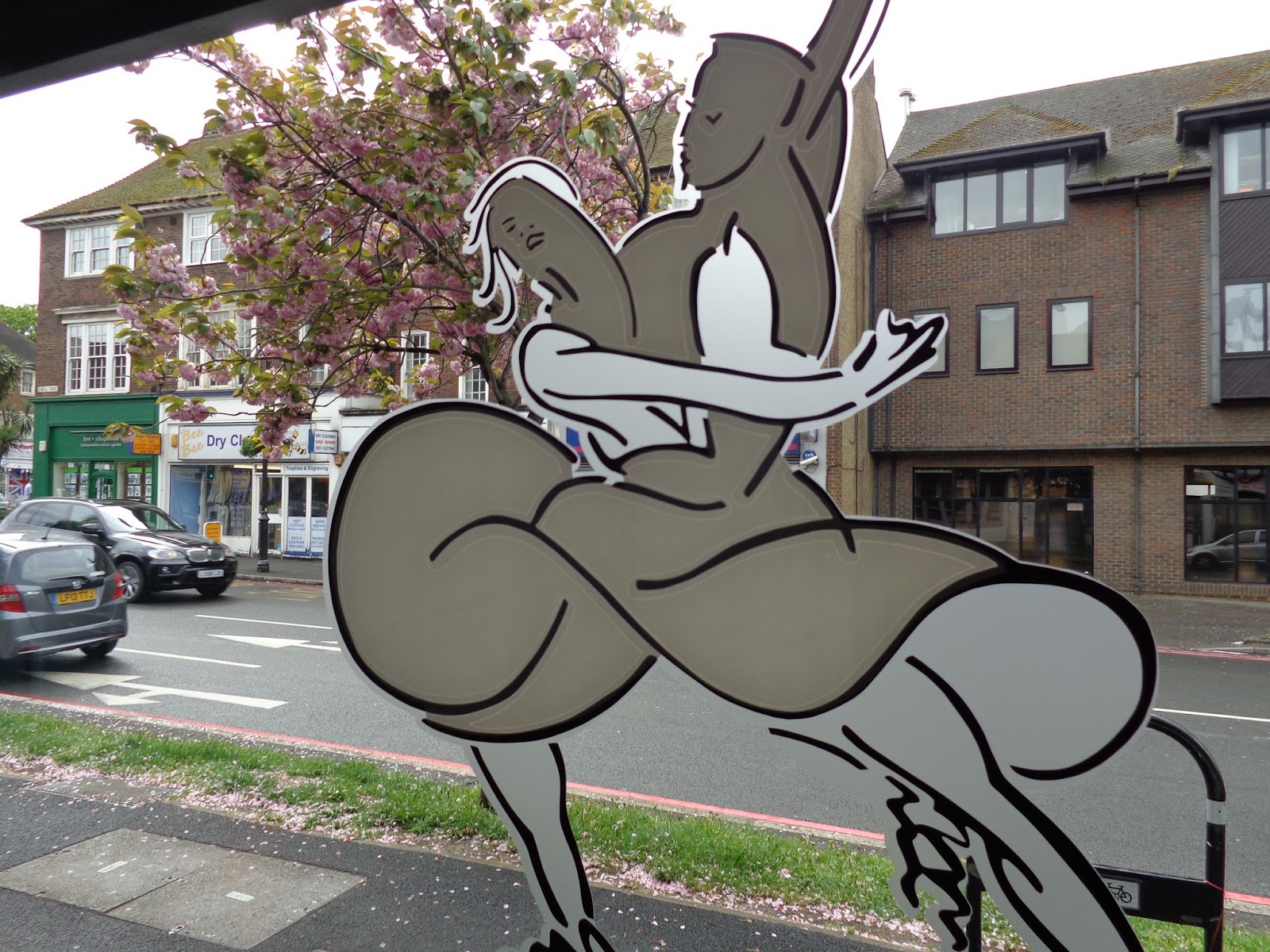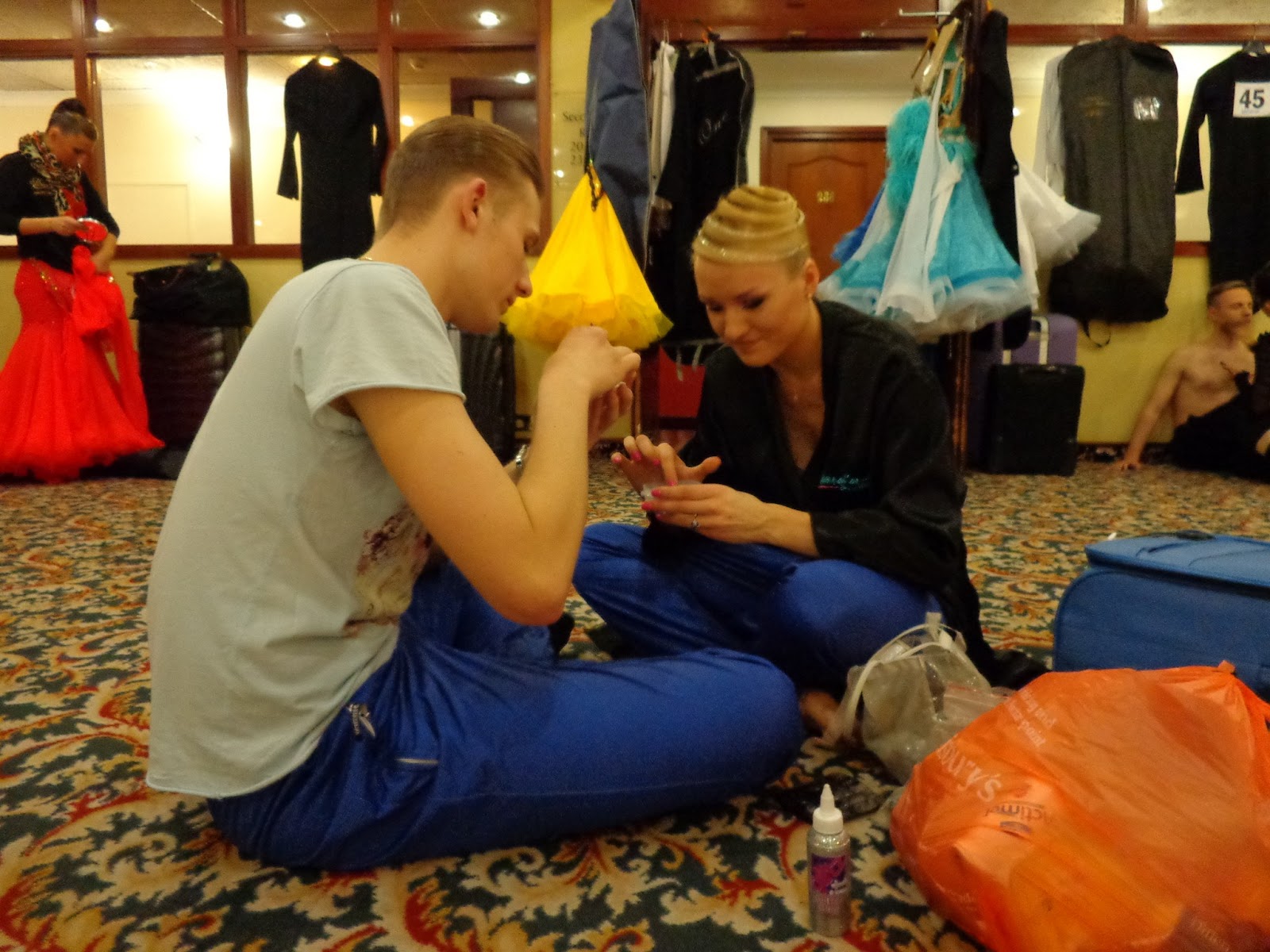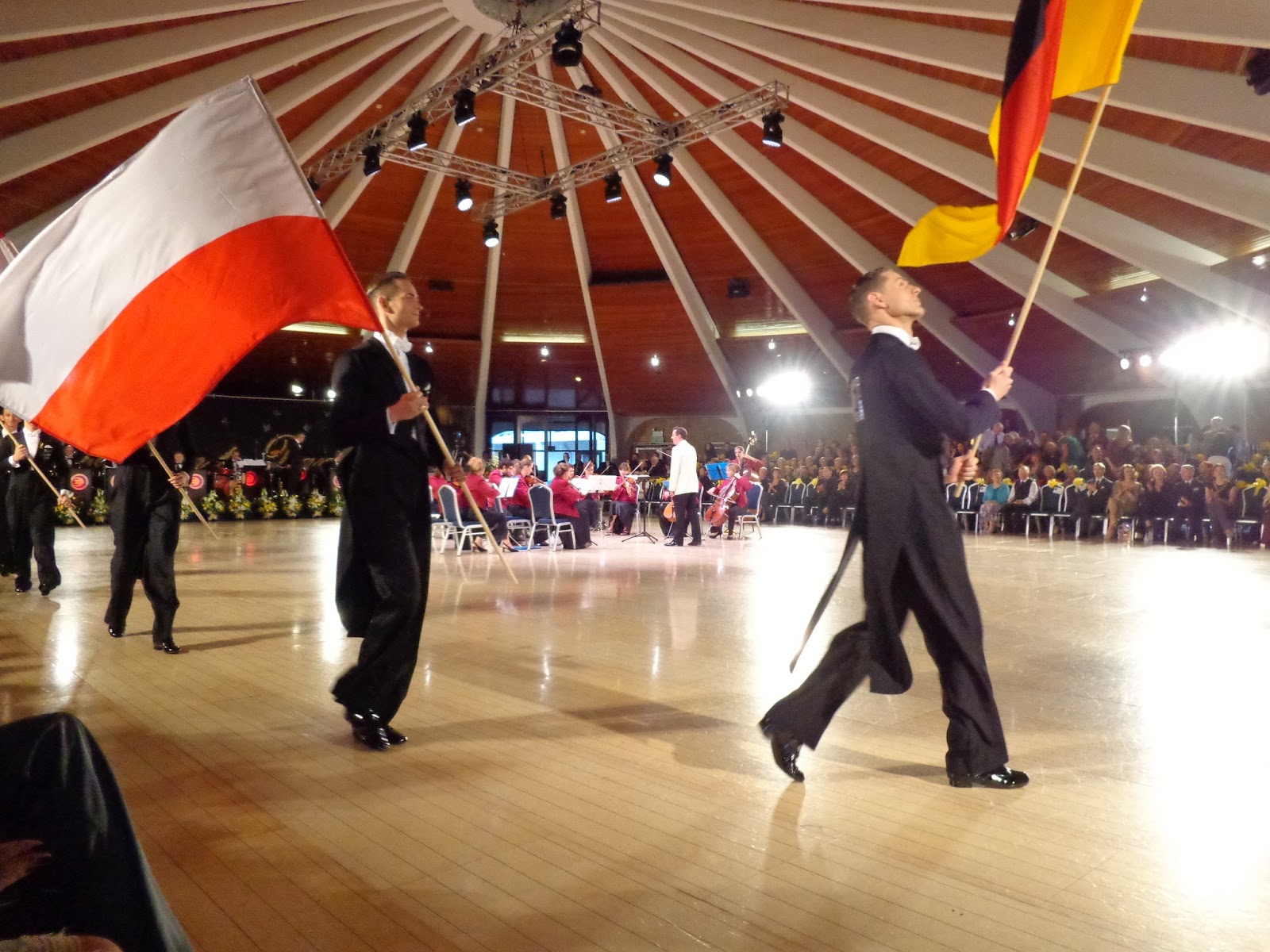W dzisiejszym poście postanowiłam przedstawić historię powstania kilku figur tanecznych, używanych w tańcach standardowych. Część tych historii jest bardzo zabawna, część natomiast umożliwia lepsze zrozumienie kroków lub wyjaśnia narodziny ich nazwy. Oto taneczne ciekawostki:
1. Double Reverse Spin początkowo nazywany był "dramatic spin" (w dosłownym tłumaczeniu "dramatyczny obrót"). Część nazwy "double" - "podwójny" wzięła się stąd, iż ta figura w przeszłości zawsze tańczona była dwa razy pod rząd, aby przyciągnąć uwagę widowni i sędziów...
2. The Whisk - figura, która powstała zupełnie przez przypadek! Pan Alex Moore słynął z tego, że przed tańcem lubił sobie wypić szklaneczkę whisky bądź dwie... Ten nawyk najwyraźniej miał wpływ na balans Pana Alex'a, a raczej może na jego brak... Podczas tańczenia kroku zmiennego zamiast dołączyć stopy Pan Alex skrzyżował je i tak właśnie powstał Whisk i oczywiście jego nazwa... ;))
3. Throwaway Oversway - figura odkryta przez Bill'a i Bobbie Irvine. Została rozwinięta z podobnej figury o nazwie Hinge. Ze względu na podobny wzrost współpartnerów, poprawne wykonanie Hinge'a było bardzo niewygodne, a wręcz niemożliwe... Po drobnych przeróbkach i udogodnieniach powstał właśnie Throwaway Oversway... <3
4. The Wing - nazwa "wing" - "skrzydełko" odzwierciedla ruch matczynego skrzydła zataczającego krąg wokół małych piskląt...
5. The Developpe and the Attitude - dwie figury, które wraz z nazwami zostały zaczerpnięte z baletu...
6. Feather Step i Feather Finish - figury tańczone w pozycji "outside partner" powstały przez przypadek pod wpływem zaczepiania się jednego lakierka partnera o drugi... ^^
6. Feather Step i Feather Finish - figury tańczone w pozycji "outside partner" powstały przez przypadek pod wpływem zaczepiania się jednego lakierka partnera o drugi... ^^
A może Wy znacie jakieś inne ciekawe taneczne historie?
In today's post I decided to present a little history of some ballroom dancing figures. Some of these stories are really funny, some allow dancers to understand the steps and the names of the figures better. Here we go:
1. Double Reverse Spin - firstly known as "a dramatic spin". The name "double" comes from the fact that this step, in order to catch the attention of the audience and the judges, was always danced twice...
2. The Whisk - a figure that has been invented accidentally. Alex Moore was known to drink a Whisky or two before dancing. Apparently it affected his balance. During a change step he lost his balance and instead of closing his feet, saved himself by crossing the left foot behind the right foot. That is how the step and the name was invented... ;))
3. Throwaway Oversway - a figure introduced by Bill and Bobbie Irvine. It was developed from the alike figure called Hinge. Because of the similar heights of the partners it was very difficult and uncomfortable to dance hinge properly... After some changes and adjustments Throwaway Oversway was born... <3
4. The Wing - the name resembles a bird streching out its wing over its young ones...
5. The Developpe and the Attitude - two figures which have been taken from ballet...
6. Feather Step and Feather Finish - figures danced in "outside partner" position were launched by accident - sticking together of the patent shoes of a man... ^^
And meybe you know some other interesting dance stories?

.JPG)















.JPG)






.JPG)

















.JPG)
.JPG)



.JPG)
.JPG)




.JPG)
















.JPG)
.JPG)
.JPG)